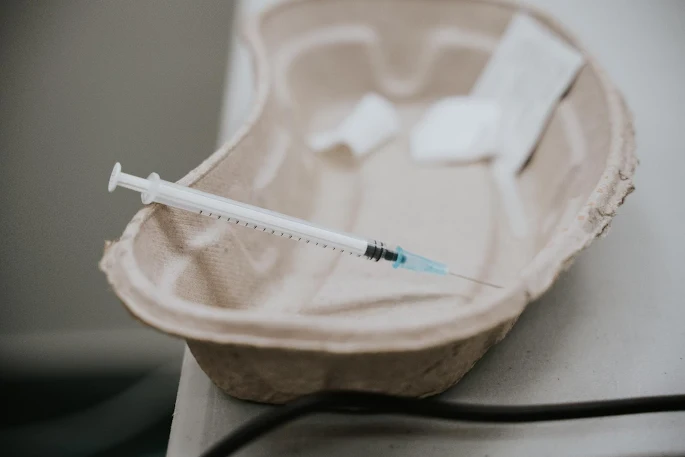Rapid technological advances in scientific research and diagnostics have given rise to an exciting range of innovative laboratory equipment. Let’s explore the latest innovations in laboratory equipment that are having a major impact on research and diagnosis.
Top Innovative Laboratory Equipment to Watch out for
Nowadays, the field of scientific research and diagnostics is evolving faster than ever. As a result, laboratory professionals now have access to innovative tools and equipment, designed to meet the increasing demands of modern research. In this article, we explore the top cutting-edge laboratory equipment that is making a significant impact on research and diagnostics.
Automated Liquid Handling Systems
Automation is revolutionizing countless industries, and the world of laboratory research is no exception. One of the most impressive innovations in this field is the introduction of automated liquid handling systems. These systems streamline the process of pipetting, diluting, dispensing, and mixing liquids in the lab. In turn, they enhance accuracy, minimize the risk of human error, and increase overall lab efficiency.
Artificial Intelligence in Laboratory Data Analysis
While not a physical piece of equipment, the incorporation of artificial intelligence (AI) into laboratory data analysis is undoubtedly an innovative development with a substantial impact on research. AI can quickly analyze massive amounts of data, identify patterns, and even predict outcomes, allowing researchers to make more informed decisions. Moreover, AI-powered platforms can assist in image analysis, genomic sequencing, and the identification of biomarkers, helping to drive faster and more accurate discoveries in healthcare and scientific research.
Advanced Signal Generation
Signal generation plays a vital role in various laboratory applications, including research in communications, electronics, and aerospace industries. Advances in signal generation technologies have led to the development of sophisticated equipment like the arbitrary waveform generator. These generators offer immense flexibility and precision in creating complex and customized waveforms, making them an essential tool for researchers looking to simulate real-world conditions in their experiments.
Next-Generation DNA Sequencing Technologies
The emergence and continuous advancement of next-generation DNA sequencing technologies have revolutionized genomics research. These technologies can generate large amounts of accurate DNA sequence data at a relatively low cost. As a result, researchers can now study whole genomes, transcriptomes, and epigenomes more easily, providing a deeper understanding of the genetic basis of various diseases, developing personalized therapies, and elucidating evolutionary and ecological relationships among species.
Portable Spectrometers
Traditionally, spectrometers have been large and bulky, requiring a dedicated space in a controlled environment. However, recent advances in technology have led to the development of portable spectrometers, which are smaller, lightweight, and more user-friendly. These devices provide scientists with the ability to quickly and accurately analyze samples on-site, saving time and resources. Portable spectrometers can be utilized in various settings, from environmental analysis to medical diagnostics.
Virtual Reality in Laboratory Training
Virtual Reality (VR) is making its way into the laboratory as an innovative training tool. This immersive technology allows researchers and technicians to interact with virtual lab environments, helping them learn and practice laboratory techniques without the need for physical resources or exposure to hazardous materials. VR-based laboratory training can significantly enhance understanding and retention of vital skills, reduce errors, and improve overall safety and efficiency in real-world laboratories.
3D Bioprinters
3D bioprinting has made great strides in recent years, allowing researchers to create three-dimensional structures of living cells, tissues, and organs. These structures can then be used for numerous research applications, including drug testing, tissue engineering, and ultimately, the creation of transplantable organs. By offering a more realistic and physiologically relevant platform for experimentation, 3D bioprinters hold immense potential to transform future medical treatments.
Lab-on-a-Chip Technology
Lab-on-a-chip technology integrates multiple laboratory functions onto a single chip, typically just a few millimeters in size. These chips enable researchers to conduct complex experiments and analyses using much smaller sample volumes and often within shorter time frames compared to traditional laboratory methods. The technology's miniaturization and high-throughput capabilities make it particularly attractive for diagnostics, drug discovery, and point-of-care testing, paving the way for faster and more efficient research outcomes.
Microfluidic Devices
Microfluidic devices, which consist of intricate networks of channels through which fluids can be manipulated at a microscale level, have become indispensable tools in modern research. Their ability to handle small volumes of fluid with high precision makes microfluidic devices perfect for applications such as DNA analysis, drug discovery, and point-of-care diagnostics. These devices not only improve experimental efficiency but also reduce sample and reagent usage, making them a cost-effective solution for many laboratories.
Conclusion
The rapid advancement in scientific research and diagnostics has brought about an exciting array of innovative laboratory equipment. From automated liquid handling systems and portable spectrometers to 3D bioprinters and microfluidic devices, these cutting-edge tools are transforming the way scientists conduct experiments and analyze data. Implementing artificial intelligence, next-generation DNA sequencing, virtual reality, and lab-on-a-chip technologies further empowers rapid and accurate discoveries, cementing the future of modern research and diagnostics in the ever-evolving field of science.

